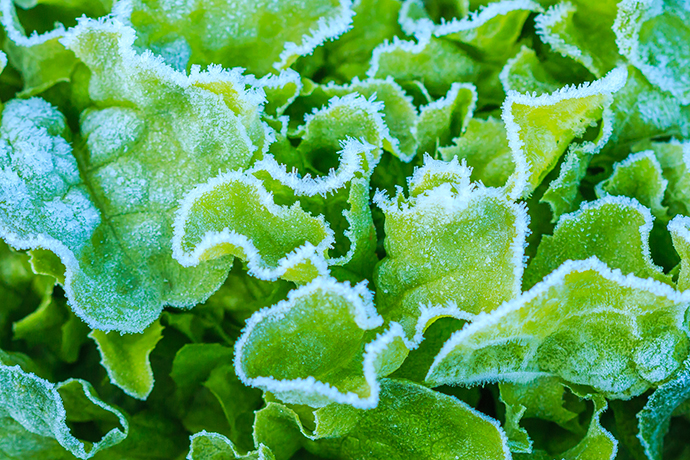Ask an Expert: Five Ways to Protect Plants from Dipping Temperatures
 With looming cold temperatures heading to Northern Utah this week, anxious gardeners are worried about their fruit trees and newly planted gardens. Buds of fruit trees vary in hardiness according to their developmental stages, but most fruit trees have flowered and set their fruit, and in general, should be safe from a light frost. According to research, approximately 10 percent of fruit will be killed at 28 F at this stage.
With looming cold temperatures heading to Northern Utah this week, anxious gardeners are worried about their fruit trees and newly planted gardens. Buds of fruit trees vary in hardiness according to their developmental stages, but most fruit trees have flowered and set their fruit, and in general, should be safe from a light frost. According to research, approximately 10 percent of fruit will be killed at 28 F at this stage.
Cool-season vegetable crops such as peas, lettuce, spinach, beets, carrots, onions, cauliflower, broccoli and cabbage are considered cold hardy and can withstand freezing temperatures with no notable damage. However, warm-season vegetables such as peppers, tomatoes, cucumbers, melons and squash can be damaged if the temperature drops to 33 F.
Consider these tips to help protect your plants as temperatures drop.
* Cover plants at night. Covers vary in their insulation characteristics, but they can generally add 3 to 5 degrees to the ambient air temperature, helping to protect plants against freezing temperatures. They can be used on nights where temperatures drop as low as 28 F.
* Choose your cover. Frost blankets or cloth row covers work well. One example is the Reemay garden blanket. Other options are plastic coverings or tarps.
* Be sure your plant covers are weighted to the ground with bricks or stones or they are anchored to the soil to protect them from blowing in the wind. Also check to make sure there are no openings where heat can escape.
* Keep plant leaves from coming in direct contact with plastic, as this can cause the leaves to freeze.
* Remember to take the covers off plants during the daytime to prevent them from overheating.
* Keep in mind that the average last frost date varies by area. For dates for your area, visit the Utah Climate Center website at https://climate.usurf.usu.edu/reports/freezeDates.php.
It is worth making the effort to protect plants from freezing temperatures. Even changing the temperature just a few degrees can determine whether plants freeze or survive.
By: Jay Dee Gunnell, Utah State University Extension horticulturist, jaydee.gunnell@usu.edu, 435-752-6263 and Mariah Pace, USU Extension intern


 Utah 4-H & Youth
Utah 4-H & Youth